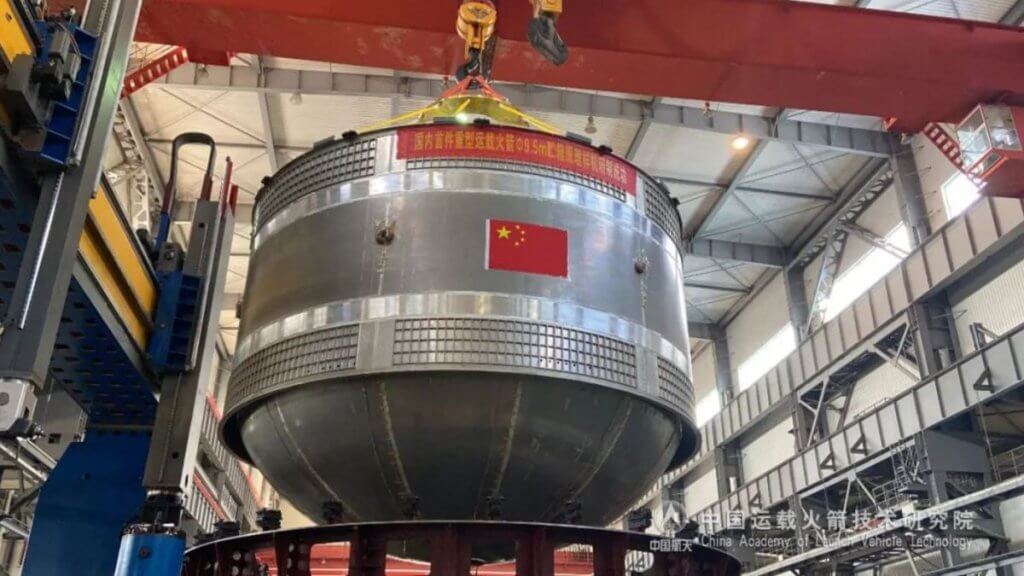China has produced a 33-foot-wide (10 meters) class propellant tank as it works toward building a super heavy-lift launch vehicle.
The China Academy of Launch Vehicle Technology (CALT) announced (opens in new tab) on March 2 that it had manufactured the huge tank, demonstrating that it had made breakthroughs required to produce a propellant storage tank strong yet also thin and light enough for use in rocket launches.
The 31.1-foot-diameter (9.5 m) tank was built to specifications for an old design for an expendable version of China’s planned Long March 9 rocket. China has since stated it is switching (opens in new tab) to a new, reusable design with a diameter of 34.7 feet (10.6 m), but the demonstration of techniques such as stir friction welding and materials will be applicable to the new plan.
Related: China’s Long March rocket family: History and photos
China’s current widest and most powerful rocket is the 16.4-foot-diameter (5 m) Long March 5 family, which can launch roughly 48,500 pounds (22,000 kilograms) to low Earth orbit (LEO). When it flies for the first time around 2030, the Long March 9 will have a payload capacity to LEO of around 308,000 to 330,000 pounds (140,000 to 150,000 kg).
The rocket will be used to build China’s planned International Lunar Research Station (ILRS), which is the country’s answer to NASA’s Artemis project. It could also be used for launching space-based solar power infrastructure and deep space missions.
CALT is a subsidiary of CASC, which is China’s state-owned main space contractor. Other CASC entities are specialized in areas including rocket making, developing and building spacecraft, designing new engines and more.
CALT is also developing a new launch vehicle for launching crew to the Tiangong space station and a larger version for sending astronauts to the moon. A first launch is currently planned for 2027.
Follow us on Twitter @Spacedotcom (opens in new tab) and on Facebook (opens in new tab).

